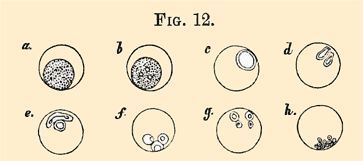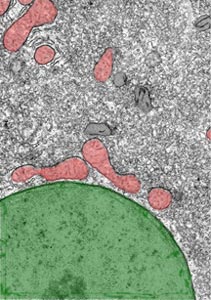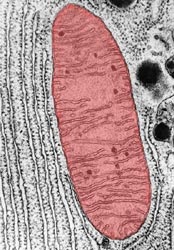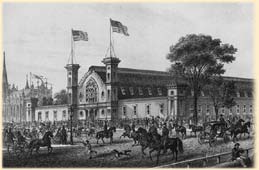
DNA is a long, twisting molecule that carries a biological blueprint. Although DNA research is popularly equated with cutting-edge modern science, the molecule was actually discovered four years after Lincoln's assassination.
A revolution in scientific thought accompanied the publication of Charles Darwin's 1858 theory of evolution and Louis Pasteur's 1868 experiments disproving the spontaneous generation of life. Swiss chemist Johann Friedrich Miescher isolated DNA in 1869 while examining white blood cells in pus from discarded medical bandages. He called his discovery "nuclein" and suggested that it might have something to do with heredity. (PORTUGAL AND COHEN 9-12; WALLACE et al 201-2)
"A series of pus-corpuscles taken from the same pus, showing the various stages of disintegration of the nucleus," c. 1867. Courtesy of the National Library of Medicine.
There are two types of DNA that must be considered in the context of the Lincoln investigation: nuclear and mitochondrial DNA.
Nuclear DNA (nucDNA) is found in the cell nucleus, which acts as a control center for hereditary information. Mitochondria, which produce the cell's energy, also contain DNA. There are structural differences between nuclear and mitochondrial DNA (mtDNA) that have important consequences for the Chicago Historical Society's investigation.
Cell nucleus (green) and mitochondria (pink). Adapted with permission from Don W. Fawcett's The Cell, 1981.
Investigators are more likely to find mitochondrial DNA than nuclear DNA in aged blood and hair samples.
There is only one nucleus in a cell but there are thousands of mitochondria. Mitochondrial DNA is more robust than relatively fragile nucDNA. When cells die, the small amount of nuclear DNA degrades more quickly than mtDNA. Hair shafts, which are composed entirely of dead cells, contain only mtDNA. (FAWCETT 426; "ANCIENT DNA SEQUENCES")






The movement is exemplified by Oliver Wendell Holmes, a physician, poet, and abolitionist. Holmes introduced microscopy to Harvard Medical School, and he championed the Civil War sanitary movement, hoping to reduce battlefield casualties by the prevention of disease. Holmes also invented the stereoscope, which created three-dimensional images of Civil War casualties. (WEISSMAN xi, 25, 103)